Component Structure and Pose Estimation DNN Improvements
DATE : June 30, 2020
In this post, I discuss the updates regarding the new structure of pose estimation and grasping components and the introduced improvements over Segmentation-driven 6D Object Pose Estimation.
Component Structure
After spending time understanding the new CORTEX software architecture and its implementation, I started planning the workflow of pose estimation and grasping components. Since this is a new architecture, I had to spend time understanding the infrastructure and asking my mentor, who was very helpful and responsive. After few days of discussing it with my mentor, I had a solid understand of the structure and implementation.
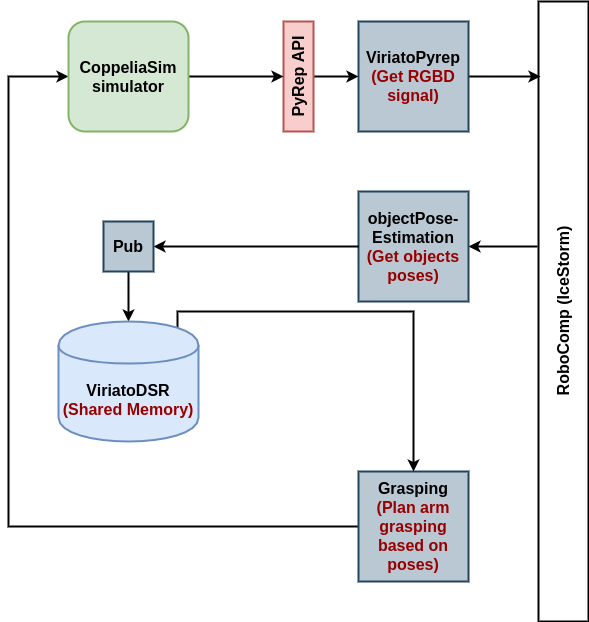
Figure(1) : Complete schema for grasping and pose estimation workflow.
As shown in the figure, the components workflow goes as follows :
-
ViriatoPyrepcomponent streams the RGBD signal from CoppelaSim simulator using PyRep API. -
objectPoseEstimationcomponent receives RGB signal fromViriatoPyrepcomponent and performs pose estimation throughSegmentation-driven 6D Object Pose EstimationDNN. -
objectPoseEstimationcomponent, then, passes the output poses toobjectPoseEstimationPubcomponent, which publishes the poses to the shared memory inViriatoDSR. -
Graspingcomponents stream the poses from the shared memory and use it to plan a grasp on the object.
For more information about components’ specifications and interfaces, refer to grasping repo.
Component Implementation
Once I had a complete structure of the components workflow, which I had discussed with my mentor, I started implementing the pose estimation component, while the Segmentation-driven 6D Object Pose Estimation network is being trained.
I need to implement two components, which are objectPoseEstimation and objectPoseEstimationPub. I decided to start with objectPoseEstimation, as it’s the main pose estimation driver and it doesn’t interact directly with ViriatoDSR. As discussed, it receives an RGB image from ViriatoPyrep, runs the network inference on it and then passes the predicted poses to objectPoseEstimationPub component to be pushed to the shared memory.
Fortunately, the implementation of objectPoseEstimation component wasn’t very difficult, thanks to RoboComp modular code generator. Also, I have created some interface functions to be able to easily run network inference on any image. So, I have completed the component implementation, however it’s not yet tested properly.
The implementation of objectPoseEstimation component can be found here.
Network Description
Now, before discussing our network improvements, let’s have a quick look at the network architecture.

Figure(2): Network diagram from original paper.
A brief description of network :
1) The input to the network is a simple RGB image. 2) The network has an encoder of Darknet-53 from YOLOv3, which is used for feature extraction of input image. 3) The network, then, has two streams : - Segmentation stream : to produce the output segmentation masks (pixel-wise object classification). - Regression stream : to get 2D keypoints corresponding to the 3D keypoints of the object in the world (object) frame. Usually, the keypoints are 8 vertices of the 3D bounding box. 4) The output 2D keypoints are used to solve a 2D-3D correspondance problem with the 3D keypoints, using RANSAC-based PnP to get object pose (extrinsics), knowing the camera intrinsics. Also, the segmentation masks are used to define object class.
Network Improvements
After testing the trained network on the augmented dataset, I found out that the network performance is very poor on new objects. Also, the network performance on YCB-Videos dataset objects isn’t as expected. Moreover, I noticed that the segmentation loss during training saturates earlier than other losses (pose loss and confidence loss).
Here are my proposed causes and potential solutions for each problem :
1) Regarding segmentation loss, I proposed using focal loss, instead of normal crossentropy loss. Focal loss is a dynamically-weighted crossentropy loss. Its usage is proposed by the original paper, too.
2) Regarding poor performance on new objects, I thought that was due to textureless objects, which can be a problem in feature extraction using Darknet-53 backend.
So, I implemented focal loss for segmentation and tuned some hyperparameters, then gave the network a quick re-train. The segmentation loss didn’t saturate anymore and the network performance improved on YCB-Videos dataset objects.
Next, I will try training on augmented dataset with textured new objects and explore further improvements.
Results
Now, let’s explore pose estimation results on YCB-Videos dataset after using focal loss and hyperparameter tuning.
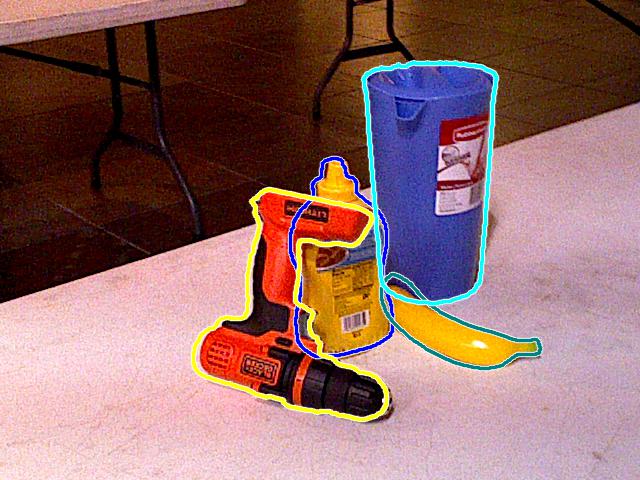
Figure(3) : Results of pose estimation on YCB-Videos dataset.
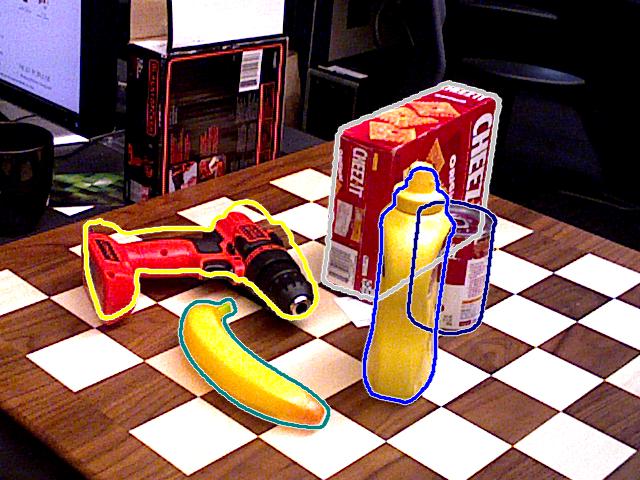
Figure(4) : Results of pose estimation on YCB-Videos dataset.
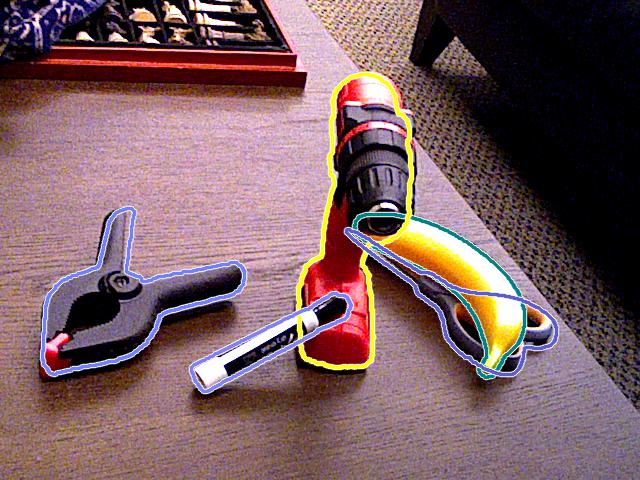
Figure(5) : Results of pose estimation on YCB-Videos dataset.
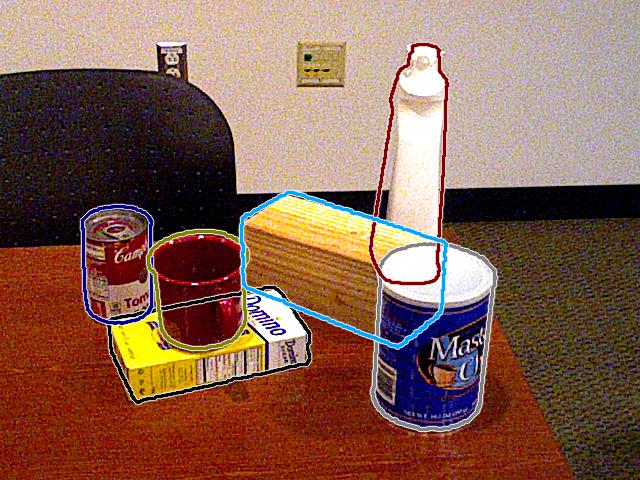
Figure(6) : Results of pose estimation on YCB-Videos dataset.
Important Dates
- June 29, 2020 :
Complete initial implementation of objectPoseEstimation component.
Commit : https://github.com/robocomp/grasping/commit/de51bd6271ac84e7d3e207a4fb3843f057813941
Upcoming Work
-
Train
Segmentation-driven 6D Object Pose Estimationnetwork on augmented dataset with textured new objects. -
Test
objectPoseEstimationcomponent thoroughly. -
Implement
objectPoseEstimationPubcomponent to completely integrate pose estimation to the new CORTEX architecture.
Mohamed Shawky
